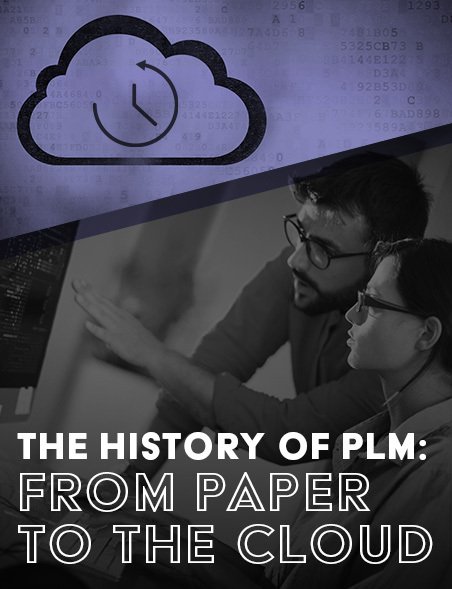4 Challenges Document Management Software Solves
Document management software benefits
 Document management software helps organizations manage documents electronically. The software enables users to:
Document management software helps organizations manage documents electronically. The software enables users to:
- Retrieve information faster
- Store files in a secure environment
- Share documentation
- Manage document revisions and approvals
Many document management software solutions on the market today are geared toward specific industries and company sizes. Cloud product lifecycle management and quality management system software that help manufacturers manage product, quality, training, and other related processes.
Document types and how they are managed
High-tech electronics and medical device companies have reams of product and quality documents including product specifications, assembly instructions, standard operating procedures (SOPs), policies, and many others. The vast majority of documents need to be reviewed and approved by multiple departments. How and where the information is stored and controlled is critical to avoid confusion over the latest version or revision.
In many organizations, document files are often saved in disparate locations and access to documentation is restricted. Engineering drawings are created in CAD tools and captured in associated product data management (PDM) vaults. Assembly instructions and SOPs are detailed in Word documents saved on a network drive. Printed copies of test reports are filed in a colleague’s desk drawer. Does this set up sound familiar to your organization? When files are stored in different tools and multiple places, it makes it difficult for employees to get their jobs done. They have to search in unfamiliar tools and several locations for documentation often resulting in frustration and wasted time.
Document management software is only one piece of the PLM puzzle
If you are looking for a solution to simply manage documents, standalone document management software tools can help helpful. However, if you need to design, produce, and deliver complex products with electronics, software, and mechanical designs—you need to connect all the key documents to the product (e.g., parts, bills of materials, CAD drawings, AML, AVL) and quality records (e.g., training plans, SOPs, CAPAs, DMRs, DHFs) to avoid having disconnected silos of information.
Managing all aspects of the product record; product documents, bills of materials, engineering changes, and financials with connected systems better prepares manufacturing companies to meet demanding product deadlines and cost targets.
Connected document management
Arena PLM enables your teams to control and manage product record information linked directly to part specifications, design requirements, CAD drawings, test procedures, and other records. Documents can be organized by user-defined categories and powerful search capabilities enable you to locate documents with ease.
You can also manage your bill of materials (BOMs) and engineering change orders (ECOs) in one place with all your documents. Furthermore, documents can be linked to specific ECOs, allowing internal teams and external partners to collaborate on the correct document revision.
Arena PLM and QMS ensure cross-functional teams always have secure, controlled access to the latest information. You can easily maintain a single version of the truth with role-based access policies that guarantee employees and partners only get specific access to the intellectual property (IP) you designate.
Four challenges that document management software solves
It’s common for young emerging manufacturing companies to turn to shared directories, in or out of the cloud. However, this is not scalable as you grow and need to share documents in context with all your product and quality records.
Document control managers and those responsible for managing documentation will find document management capabilities within PLM and QMS solutions can solve four key challenges.
Challenge #1: There isn’t enough time in the day
Do you have to dig your way through stacks of paper, scour your email inbox or navigate the file directories used by various teams to find a document? All of these practices can be extremely time-consuming. Document management software that is embedded in PLM and QMS enables quick access so users can find what they need when they need it.
Challenge #2: There’s only one of you
As the person in charge of document control, do teams have to rely on your to gain access to documents? Do you have to waste time determining who has access to specific documents? And, can your users that are not engineers (and hence don’t use CAD) access, view, and collaborate around all the design records?
Rather than constantly helping others get access to the documents they need, document control managers can focus on core, critical-path responsibilities when document management software tied to PLM and QMS solutions is in place. PLM and QMS enable easy access via a web browser anytime around the world. And unlike a PDM vault or directory server, your non-CAD users will find document management software intuitive and easy to use. This includes supply chain partners that may not have a level of software or computer-savvy skills (e.g., sheet metal houses).
Challenge #3: Email, chat, and phone calls don’t suffice
Are you constantly having to chase down approvers to obtain sign-off on product changes? If so, you need an electronic-based approval system that meeting regulatory compliance directives like ISO, FDA 21 CFR Part 11, and other standards.
Document management software, coupled with an automated engineering change process, allows you to automate review and approval processes with real-time access. You’ll know exactly who has signed off at all times and who still needs to review without chasing down approves via email or chat.
Challenge #4: Teams are confused about the latest revision or version
When you finally find the document you’ve spent hours searching for, are you confident that it’s actually the latest version? Or is there a more recent version somewhere else in the organization?
An effective document management software system enables the key stakeholders to manage the lifecycle of the document for maximum control. With revision-control capabilities, you can capture history details for more accountability and traceability. You’ll be certain you have the most recent version at all times and your teams can focus on designing, developing, testing, and releasing high-quality products.
Document management software addresses your challenges
Manufacturing companies have significant challenges in getting their product built and into the hands of customers. With a document management—linked to PLM and QMS software—you have a single source of truth for the entire product and quality record. You’ll eliminate the confusion and chaos of having duplicate or lost documents, giving controlled access to internal teams and partners to help you speed your product launches.



